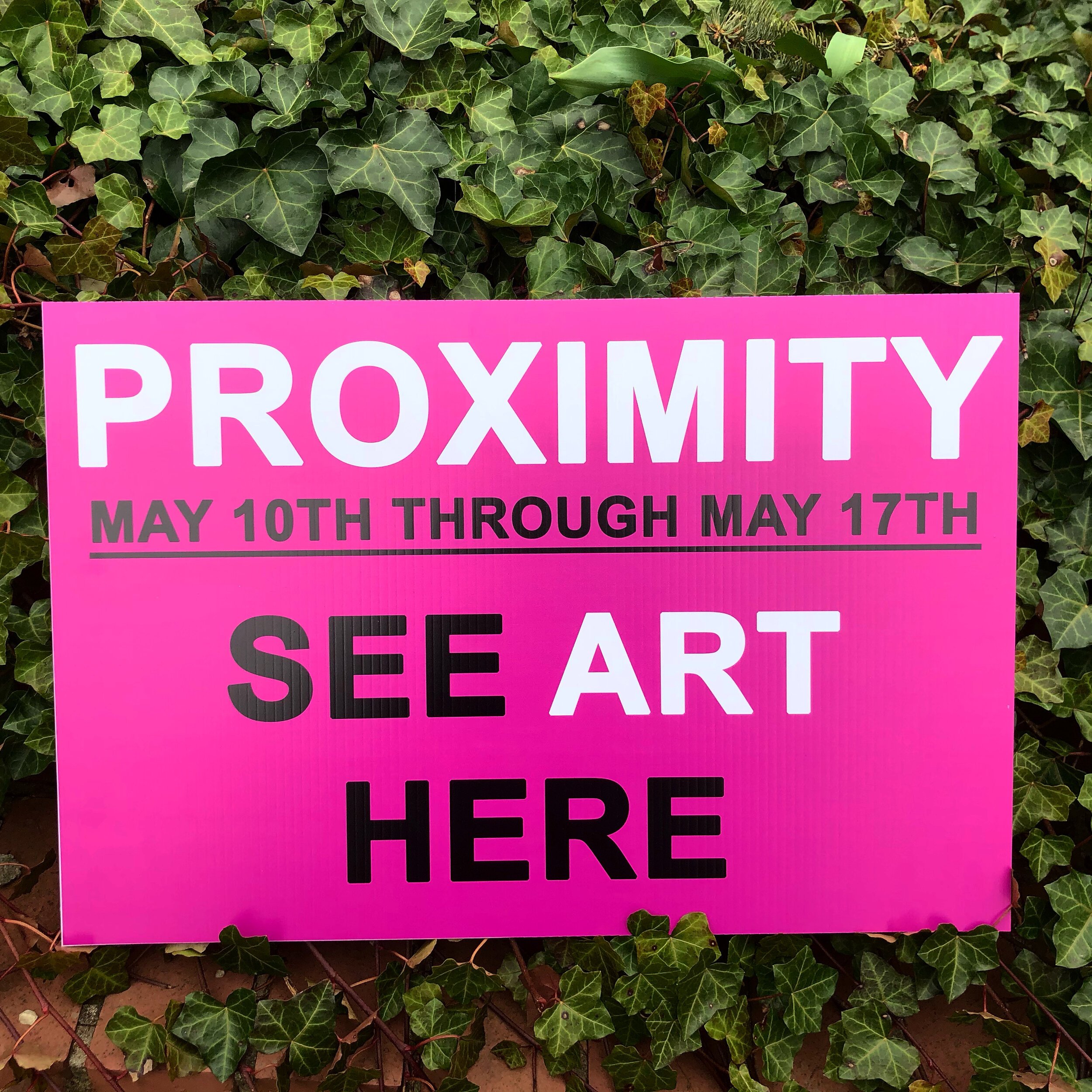Emily Tucker on Adapting to New Circumstances and the Importance of Supporting Arts Organizations
Interviewed by:
Emily Ebba Reynolds
Published in May, 2020 in the early days of the Coronavirus Pandemic. Issue 3 of Cornelia was virtual only.
This interview took place on May 15th, 2020, and has been edited for clarity.
Emily Ebba Reynolds: Can you give us a little background about who you are and how you got here?
Emily Tucker: Sure, I grew up in Buffalo, but I really grew up in an art gallery. My parents started Benjaman Gallery in 1970, 12 years before I was born, so that's where I spent my life. My dad also had a gallery in Florida and in Dallas and an office in New York, so he traveled quite a bit and it was very cool. Like, I remember being in a limo in New York, driving around with some artists and it was the coolest thing ever. My dad worked with some very commercial artists in the 80s and 90s, like Peter Max and Erté. So I worked in art sort of by default as a little kid. When I went to college I decided I wanted to be able to fully support myself and do something completely different, so I went to school at Tulane in New Orleans for finance, and then I moved to New York and worked at Morgan Stanley as a global sourcing analyst, and then at a hedge fund that got all of our money from Lehman Brothers. When Lehman Brothers collapsed in 2008 during the financial crisis, my boss took a different job at a different hedge fund and asked if I wanted to work there, but at that point, I was like, "You know what, I think I'm done."
About that time a place called Macklowe Gallery was looking for an associate, and they specialized in high-end French Art Nouveau, so I worked there for a couple of years doing sales and marketing and working on their website and with clients, which was really helpful. I sold a chair to John Lithgow which was pretty cool. And then my parents asked me to move home. My dad has been ill most of my life, and so they needed help at Benjaman Gallery. So I moved back to Buffalo in 2010 and started doing shows again at Benjaman, with mostly historical work. My brother and mother and I have bought a few artists’ estates through connections my brother has. My brother will tell us, "Okay, there are these 60 abstract expressionist paintings by this woman whose husband was in a group with Mark Rothko. Should we buy them?" So sometimes we buy them and do a show with them at Benjaman and sell them. We've always had very unique inventory and unique opportunities to share some special work in Buffalo.
Pretty early on we realized that we needed the internet to make all this work. I think a lot of people that run galleries here have spouses with other sources of income, or they have other ways to make money, but for my family it's really just been about buying and reselling art. My parents used eBay for years and years when it was the first platform to sell art on the internet but then it kind of became oversaturated and wasn't as effective, so I started figuring out ways that we could market online. Now we use First Dibs and Artsy. We've always sort of adapted, and now online we sell about a piece a day most of the time.
But I also really wanted to try to have a space that was very different from Benjamin. The gallery has been in an old Victorian house since 1979, and it's beautiful, but it sort of limits what I can show. So, I've been looking for the right contemporary space and have a couple of things in the works.
Three Toma Yovanovich prints.
ER: It’s really interesting hearing about how you’ve adapted how to make sales for Benjaman over time, and I think it feels really related to what you've been doing since COVID-19 started negatively impacting artists and arts organizations. One of the first things I saw someone do to financially help arts orgs in Buffalo were the prints that you started selling on eBay.
ET: Yes! So, as I mentioned, whenever we have the opportunity to buy or represent an artist’s estate, we take it. So in the case of Toma Yovanovich we got a call to look at the entire estate, and the prints were incredible. We purchased literally probably 1000 works of art, ranging from paintings, monotypes, woodblocks, sculpture. When the pandemic started hitting the US and we realized all of our programming had to be canceled–and it wasn't just us, it was all the culturals, from really small theater groups all the way up to the Burchfield Penney Art Center–everybody was going to feel the effects of this, and it made us feel stressed out and terrible for the whole cultural scene. Our gallery can't succeed if there aren't nonprofit culturals and great museums and smaller contemporary spaces like BICA and Hallwalls. So I started thinking about what we could do, both with Benjaman and Resource:Art. At Benjaman, I was thinking, “Hey, we have this print work, let's try listing it on eBay.” We had some other ideas too, but we felt like we needed to do something immediate. And so we started listing them, and letting the organizations know that we were doing it just to give them something. Even if in the end we're only writing them a check for $50, it's something. And you know it's been pretty successful. In the beginning, I was thinking, "oh, we'll take a few percent and that will help us too.” But in the end we just decided to give the full amount to the organization because it was not that much money, and you know, we feel like we're doing okay. It makes us feel good to be doing something. We haven't sold another batch in a few weeks, but we do want to keep doing it. We have other organizations that we want to help.
And then, with Resource:Art we have an Artsy account where we can list shows on their beautiful virtual platform. Elizabeth Samuels, my partner in Resource:Art, and I thought that would be another way to support contemporary artists. We were thinking something along the lines of putting a call out to artists to submit work and then we'd list it on Artsy and donate a percentage of our commission to different organizations and the artist would choose an organization, not necessarily an arts org, just whatever the artist wanted. So that was the basis of our Support exhibition on Artsy. That's been sort of successful. I do think it's a hard time to buy art right now. I know a lot of people are just struggling to keep themselves going, but slowly I think people are feeling more comfortable financially, and sales generally between all the platforms I use to sell art are creeping back up. So we will keep the “show” up and keep promoting it. We'll also try to add some work related to PROXIMITY to Artsy because we're getting so much traffic on our website right now from that.
ER: Yes! Tell us about PROXIMITY!
ET: So, I think we were getting sick of all these virtual things. Like, they are fine, but we're all hitting our limit I think. So Elizabeth sent me these videos of people in Italy, the singers on the balconies, and others of people doing things in New York and Berlin, so we were looking at that stuff and thinking that people in Buffalo have these killer houses and porches...what if we could put something similar together? Artists were immediately interested in the idea. So then we just had to plan how it would work and how we could make it easy for people to navigate, and make sure people could find out about it and get excited.
Turns out, it was pretty easy to get people excited, visitation has been great and the artists have been sending us pictures with people in front of their houses. Both the artists and Resource:Art have been getting great notes on Instagram, saying, "Thank you for giving me something to do with my family!" One mom used it to make a scavenger hunt for her kids with all these things printed out, and seeing that made me cry. She posted a video of her kid saying, "I love this artist!" To me, that is just the best thing ever. I hope that kind of thing has happened a lot, and that we're giving people something to do that’s safe and that's related to art and that's a little bit uplifting and distracting. I think that can be a really important role for art in society, to entertain us and help us see something different when a lot of things we see and read are horrible.
ER: What do you think that we need to do to keep both artists and the organizations that support their work safe through this crisis, and beyond?
ET: Buy membership to all of the cultural organizations you love! Renew early! Or donate! Go to their websites and make donations. Some of them have merchandise for sale online too! I just bought a painting from Starlight Art Studio, and a tote bag and a notebook from Torn Space. These places need support, especially when they can't do the fundraising events and regular programming they usually do. I'm also the Director of Fundraising at Hallwalls Center for Contemporary Art, so I know how much all these organizations really need memberships and people to support them right now. Everybody is making really valiant efforts to bring out virtual programming, but it's just hard. It's so different.
Long term, we're all waiting to see what happens with the government and city, county, and state funders. Of course, in a financial crisis, the first things that are going to get cut are arts and culture. To know that you are deemed not essential is scary and demeaning. We're all going to need more corporate support, more individual support, and to work together to demand continued support for arts and culture in the future.
ER: Thanks for chatting with us! Great job with PROXIMITY, and thanks for working so hard on these projects.
Emily Ebba Reynolds is a curator, arts organizer, and marketing specialist. She is the co-founder of the Buffalo Institute for Contemporary Art and Cornelia Magazine



